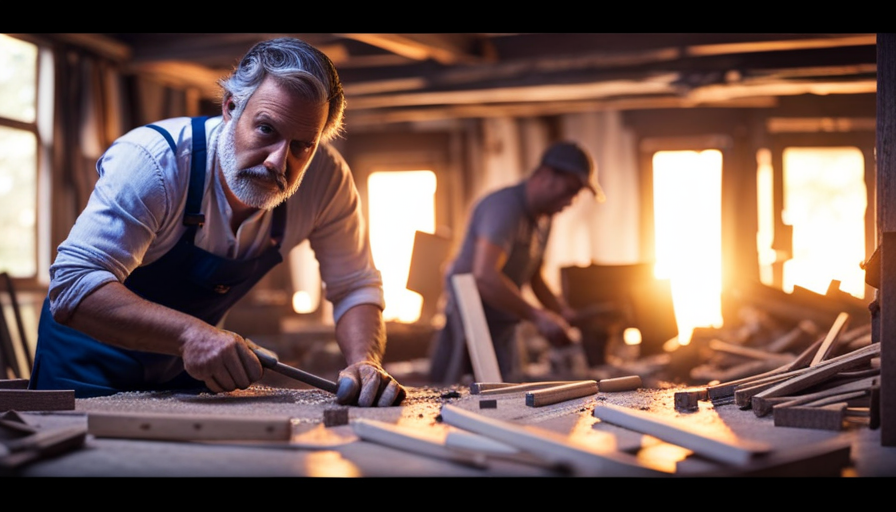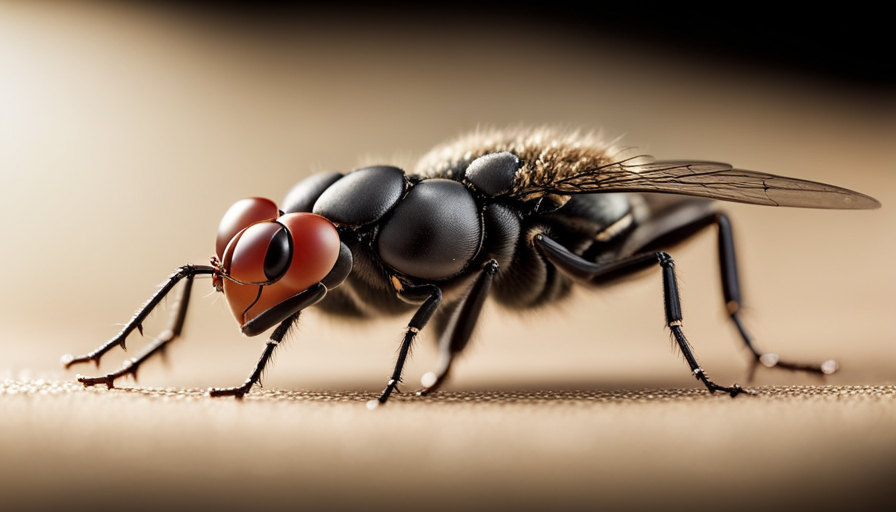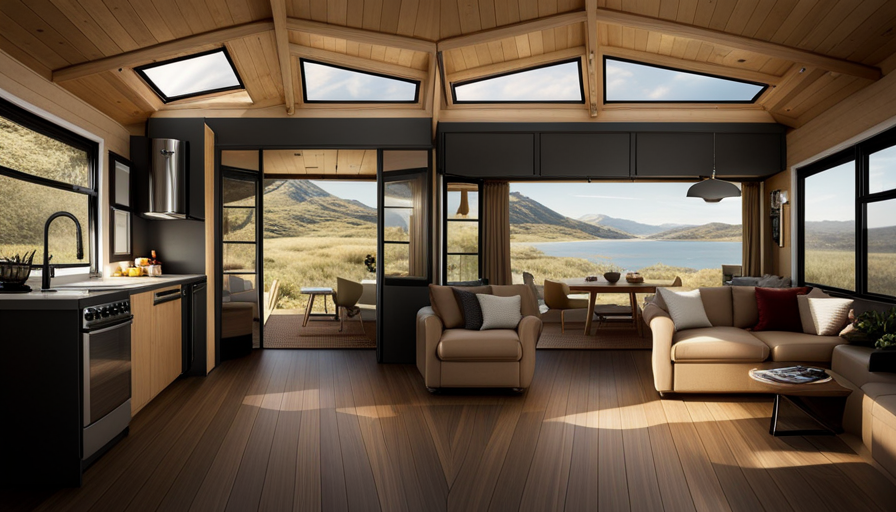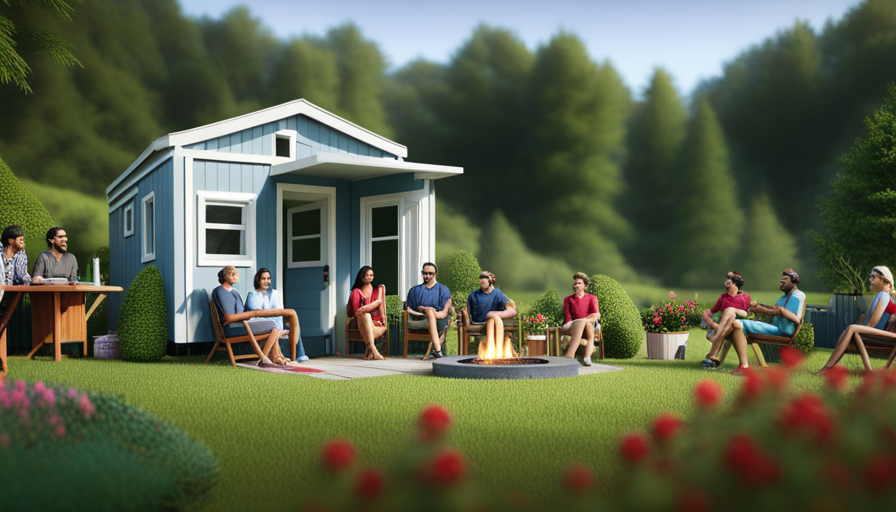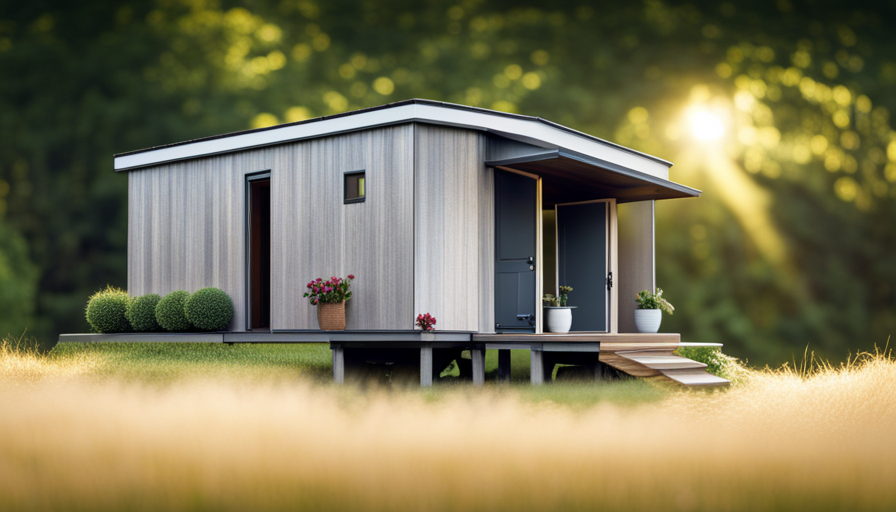Imagine stepping into a world where simplicity and functionality come together, where every inch is carefully designed to maximize both comfort and efficiency. Welcome to the enchanting world of tiny homes.
These miniature dwellings have taken the housing industry by storm, capturing the hearts of individuals seeking a minimalist lifestyle. In this article, I will guide you through the mesmerizing process of how a tiny house is made, from selecting the perfect location to adding the final touches and decor.
Building a tiny house is like embarking on a thrilling adventure, where every decision and detail counts. With my expertise and knowledge, I will walk you through each step of the process, ensuring you have a comprehensive understanding of how these remarkable homes are brought to life.
From designing the layout to selecting the materials, from framing and insulation to plumbing and electrical connections, I will unveil the secrets and techniques used to create these cozy sanctuaries.
So, buckle up and get ready to delve into the fascinating world of tiny house construction.
Key Takeaways
- Selecting the right location and designing the layout are crucial steps in building a tiny house.
- Sustainable materials can be used in construction, such as reclaimed wood and bamboo.
- Proper insulation is important for energy efficiency, indoor air quality, and soundproofing.
- Plumbing, electrical systems, and smart home technology can be integrated for convenience and control.
Choosing the Right Location
You need to find the perfect location for your tiny house that will make you feel like you’ve found your own little slice of paradise. When it comes to finding the right community for your tiny house, there are a few key factors to consider.
First and foremost, you want to make sure that the community is supportive of tiny house living. Some communities have specific zoning regulations that may restrict or even prohibit the placement of tiny houses. It’s important to do your research and find a community that’s open to this type of living arrangement.
In addition to zoning regulations, you’ll also want to consider the overall vibe of the community. Are the neighbors friendly and welcoming? Is there a sense of community spirit? These are important factors to consider, as living in a close-knit community can greatly enhance your tiny house experience.
Once you’ve found the right community, it’s time to start designing the layout of your tiny house. This is where your creativity can really shine.
Designing the Layout
Start by envisioning the perfect arrangement for your compact living space. When designing the layout of your tiny house, it’s crucial to maximize every inch of available space. Think about how you will use each area and consider the flow between different zones.
One effective strategy for maximizing space is to incorporate built-in storage solutions. Utilize under-stair storage, loft spaces, and multi-functional furniture to make the most of every nook and cranny. Consider incorporating hidden compartments and pull-out drawers to keep your belongings organized and out of sight.
Another important aspect of designing the layout is to create separate zones for different activities. Define areas for sleeping, cooking, dining, and relaxing. Use furniture and room dividers to create boundaries and create a sense of privacy. Make sure to leave enough open space to move around comfortably, but also keep in mind that every inch counts.
Transitioning into the next section about selecting materials, it’s important to choose materials that not only fit the aesthetic of your tiny house but also contribute to maximizing space and functionality.
Selecting the Materials
When it comes to outfitting your pint-sized abode, it’s time to get creative with the choice of materials. The key is to find sustainable materials that are also cost effective options. In order to build a tiny house that is environmentally friendly and budget-friendly, there are several materials to consider.
One sustainable material option is reclaimed wood. This can be sourced from old barns, pallets, or even salvaged from construction sites. Reclaimed wood not only adds character to your tiny house, but it also reduces the demand for new lumber, making it an eco-friendly choice.
Another sustainable material to consider is bamboo. This fast-growing grass is incredibly durable and can be used for flooring, countertops, and even as a structural element. Bamboo is not only affordable, but it also has a minimal impact on the environment.
In addition to sustainable materials, there are also cost effective options to consider. For example, using recycled steel for the framing of your tiny house can be a more affordable alternative to traditional wooden framing.
When selecting materials for your tiny house, it’s important to strike a balance between sustainability and cost effectiveness. By incorporating sustainable materials and cost effective options, you can create a tiny house that is both environmentally friendly and budget-friendly.
Transitioning into the subsequent section about building the foundation, it’s important to carefully consider the materials used to ensure a solid and stable base for your tiny house.
Building the Foundation
To create a strong and stable foundation for your pint-sized abode, it’s time to dive into the exciting process of building the base.
When it comes to building a tiny house foundation, there are several building techniques and foundation materials to consider. One popular method is to use concrete piers. These piers are placed strategically underneath the main support beams of the house, providing a solid and level base for the structure.
Another option is to use a concrete slab foundation. This involves pouring a large concrete pad on which the entire house will sit. This method offers excellent stability and durability.
When building the foundation, it’s important to ensure proper drainage and ventilation. This can be achieved by incorporating a gravel layer beneath the foundation, which allows for water to drain away from the structure. Additionally, vents can be installed to allow for air circulation underneath the house, preventing moisture buildup and potential damage.
Once the foundation is complete, it’s time to move on to the next step: framing and insulation. This crucial stage will provide the structure and insulation necessary to create a comfortable and energy-efficient living space.
Framing and Insulation
When it comes to framing and insulation in building a tiny house, there are two key points to consider. First, constructing the frame and installing insulation for energy efficiency. Constructing the frame involves carefully measuring and cutting the lumber to create the skeleton of the house, ensuring it’s sturdy and level.
Second, installing insulation is crucial for maintaining a comfortable temperature inside the tiny house and reducing energy consumption. This involves fitting insulation material between the frame studs and sealing any gaps or cracks to ensure maximum efficiency.
Constructing the Frame
As you embark on the journey of assembling your tiny house frame, brace yourself for the eternal struggle of deciphering the cryptic instructions and pretending that you actually understand them.
Constructing the frame of a tiny house requires careful consideration of constructing techniques and budget considerations. You’ll need to determine the type of framing material, such as wood or metal, based on your preferences and budget.
Additionally, you’ll want to ensure that the frame is sturdy and able to withstand the weight of the structure. This involves measuring and cutting the pieces accurately, and using proper joinery techniques to create a strong frame.
Once the frame is constructed, you can then move on to installing insulation for energy efficiency, ensuring that your tiny house remains comfortable and sustainable.
Installing Insulation for Energy Efficiency
Installing insulation in your tiny house is crucial for maximizing energy efficiency and creating a comfortable living space. When it comes to energy efficient insulation options, there are several choices to consider.
One option is fiberglass insulation, which is affordable and easy to install. It helps to create a thermal barrier, preventing heat loss during the winter and keeping the interior cool during the summer.
Another option is spray foam insulation, which provides a seamless and airtight barrier against drafts and moisture. This type of insulation also has soundproofing properties, creating a quieter and more peaceful environment inside your tiny house.
Proper insulation offers numerous benefits, including reduced energy bills, improved indoor air quality, and a smaller carbon footprint. With the insulation in place, the next step is to move on to installing plumbing and electrical systems, ensuring your tiny house is fully functional and efficient.
Installing Plumbing and Electrical Systems
To make sure your tiny house is fully equipped, you’ll need to get the plumbing and electrical systems set up, so it’s smooth sailing from here on out.
Installing plumbing and electrical systems in a tiny house requires careful planning and execution. One important aspect to consider is installing solar panels to harness the power of the sun and make your tiny house more energy-efficient. These panels can be mounted on the roof or in a separate area nearby, depending on the space available.
Additionally, integrating smart home technology into your tiny house can provide added convenience and control over your electrical systems. This can include features such as smart thermostats, lighting controls, and remote access to your security system.
When installing the plumbing system, it is crucial to ensure that all pipes are properly insulated to prevent freezing during colder months.
As for the electrical system, it’s essential to work with a qualified electrician to ensure all wiring is up to code and safely installed.
Once the plumbing and electrical systems are in place, you can move on to the exciting phase of adding interior finishes and features that will truly make your tiny house feel like a home.
Interior Finishes and Features
Now that the plumbing and electrical systems are in place, it’s time to transform your tiny space into a cozy haven with beautiful interior finishes and features. Here are some interior design ideas and space-saving solutions to make the most out of your limited space:
-
Multipurpose furniture: Invest in furniture that serves multiple functions, such as a sofa that can also be used as a bed or a coffee table with hidden storage compartments.
-
Vertical storage: Utilize the vertical space in your tiny house by installing shelves, hooks, and hanging organizers on the walls. This helps keep your belongings organized and frees up floor space.
-
Mirrors: Hanging mirrors strategically can create an illusion of a larger space. They reflect light and make the room feel more open and airy.
-
Light colors and natural light: Opt for light-colored paint or wallpaper to make the space feel bigger and brighter. Additionally, maximize natural light by installing large windows or skylights.
With these interior design ideas and space-saving solutions, your tiny house will feel spacious and comfortable.
In the next section, we’ll explore exterior finishes and roofing, completing the transformation of your dream tiny home.
Exterior Finishes and Roofing
When it comes to choosing the exterior finishes for a tiny house, it’s important to opt for weather-resistant and low-maintenance materials. These materials will help protect the house from the elements and require minimal upkeep, allowing for a worry-free exterior.
Additionally, proper ventilation and insulation should be installed to ensure a comfortable and energy-efficient living space. This’ll help regulate the temperature inside the house and prevent any moisture-related issues.
Choose Weather-Resistant and Low-Maintenance Materials
Using weather-resistant and low-maintenance materials is key in constructing a tiny house. When choosing weather-resistant materials, it’s important to consider their durability and ability to withstand harsh elements. Opting for materials such as vinyl siding, fiber cement, or metal cladding can provide excellent protection against rain, wind, and UV rays. These options aren’t only weather resistant but also budget-friendly, making them a practical choice for tiny house construction.
Additionally, using low-maintenance materials eliminates the need for constant upkeep, allowing homeowners to focus on enjoying their tiny house rather than maintaining it. Proper ventilation and insulation are crucial in creating a comfortable living space, so the next step is to ensure these elements are installed effectively.
Install Proper Ventilation and Insulation
To create a comfortable living space, you’ll want to ensure proper ventilation and insulation are installed effectively.
When it comes to ventilation, it’s important to choose the right techniques to maintain a healthy airflow inside the tiny house. Installing vents in key areas such as the kitchen and bathroom can help remove excess moisture and odors. Additionally, using fans or windows strategically can improve air circulation.
As for insulation, it plays a crucial role in maintaining a comfortable temperature inside the tiny house. Proper insulation installation techniques, such as using high-quality insulation materials and sealing any gaps or cracks, can help prevent heat loss in winter and heat gain in summer. These measures ensure that your tiny house remains cozy and energy-efficient.
Moving on to plumbing and electrical connections, it’s essential to handle these aspects carefully to ensure the proper functioning of your tiny house.
Plumbing and Electrical Connections
In order to bring the tiny house to life, the plumbing and electrical connections dance together like a synchronized duo, seamlessly intertwining to create a harmonious living space.
The first step in this intricate process is the plumbing installation. From the water supply to the drainage system, every pipe and fixture is carefully planned and installed to ensure efficient and reliable water flow throughout the tiny house. Whether it’s the kitchen sink, bathroom shower, or even a washing machine, all plumbing fixtures are strategically placed to maximize space and functionality.
Once the plumbing is in place, it’s time to focus on the electrical wiring. This step requires meticulous attention to detail as it involves not only ensuring that all outlets and switches are properly wired, but also incorporating safety measures like circuit breakers and grounding systems. From lighting fixtures to appliances, every electrical component is carefully integrated to provide ample power supply while maintaining optimal safety standards.
As the plumbing and electrical connections come together, the tiny house starts to take shape. With running water and a reliable source of electricity, the possibilities for comfortable living are endless.
From here, it’s time to move on to the final touches and decor, where personal style and creativity can truly shine.
Final Touches and Decor
When it comes to final touches and decor for my tiny house, I believe it’s important to add personalization and style to make it truly feel like home.
This can be done through choosing furniture, artwork, and decorative pieces that reflect my unique taste and personality.
Additionally, I want to ensure that the tiny house is complete with functional and aesthetic details, such as storage solutions and lighting fixtures, that not only serve a purpose but also enhance the overall look and feel of the space.
By paying attention to these final touches, I can create a cozy and inviting environment in my tiny house.
Add Personalization and Style
Get creative and add your own personal touch to your tiny house, making it uniquely yours. Personalized decor and a unique style can really bring your tiny house to life. Start by selecting colors, patterns, and textures that reflect your personality and taste.
Consider incorporating DIY projects, such as handmade artwork or furniture, to give your tiny house a one-of-a-kind feel. Display cherished items and mementos that hold sentimental value. Add plants and greenery for a fresh and inviting atmosphere. Don’t forget to include functional and aesthetic details that suit your lifestyle, such as shelving units, storage solutions, and multipurpose furniture.
By infusing your tiny house with your personal style, it becomes a true reflection of who you are.
Now, let’s move on to how to complete the tiny house with functional and aesthetic details.
Complete the Tiny House with Functional and Aesthetic Details
To truly bring your tiny sanctuary to life, consider adding functional and aesthetic details that embody your unique vision and elevate the overall ambiance. One important aspect to consider is functional storage. In a tiny house, every inch counts, so maximizing storage space is key. Get creative with built-in storage solutions such as hidden drawers under seating or stairs, overhead cabinets, and pull-out shelves. Additionally, think about incorporating multi-functional furniture pieces like a storage ottoman or a bed with built-in drawers.
Another way to personalize your tiny house is through creative decor. Since space is limited, choose decor items that serve a dual purpose, such as wall-mounted shelves that also act as artwork or decorative storage containers. Opt for bright colors and patterns to add visual interest and make your tiny house feel more vibrant. Don’t forget to incorporate personal touches like photos, artwork, or small plants to make the space feel like home. By paying attention to functional storage and creative decor, you can truly make your tiny house a reflection of your unique style and personality.
| Functional Storage | Creative Decor | Dual Purpose Decor |
|---|---|---|
| Hidden drawers | Wall-mounted shelves | Decorative storage |
| Overhead cabinets | Bright colors | Containers |
| Pull-out shelves | Personal touches | Multi-functional |
Frequently Asked Questions
How much does it cost to build a tiny house?
Building a tiny house can cost anywhere from $10,000 to $100,000, depending on various factors. The cost breakdown typically includes building materials, labor, permits, and any additional features or customization.
Building materials can range from $10,000 to $30,000, depending on the quality and type of materials used. It’s important to carefully consider your budget and prioritize your needs to ensure a successful and cost-effective project.
Can I customize the layout and design of my tiny house?
Absolutely not! When it comes to tiny houses, you’re completely stuck with the layout and design that comes standard. There are absolutely no customization options whatsoever.
Why would anyone want to have the freedom to create a space that reflects their unique style and needs? It’s much more fun to live in a cookie-cutter tiny house that looks just like everyone else’s.
Who needs design flexibility anyway?
How long does it typically take to build a tiny house?
The average construction time for a tiny house can vary depending on various factors such as size, complexity, and customization. However, it typically takes around 3 to 6 months to build a tiny house from start to finish.
Common challenges that can affect the construction timeline include obtaining permits, sourcing materials, and coordinating with contractors. It’s important to plan and prepare accordingly to ensure a smooth and timely construction process.
Can I legally live in a tiny house?
Yes, it’s possible to legally live in a tiny house. However, there are some important factors to consider. Legal restrictions and zoning regulations vary depending on the location, so it’s crucial to research and comply with local laws. Some areas have specific requirements for minimum square footage, utilities, and foundation types. Additionally, some places may only permit tiny houses in designated communities or as accessory dwelling units. It’s important to consult with local authorities and professionals to ensure compliance with all regulations.
Are there any financing options available for building a tiny house?
Sure, there are plenty of financing options available for building a tiny house. From personal loans to RV loans, there are various ways to fund your project.
Some lenders even specialize in tiny house loans, making the process easier. Additionally, you can explore crowdfunding platforms or seek out grants specifically for tiny house construction.
So, don’t worry about breaking the bank; there are countless loan options out there to help you turn your tiny house dreams into reality.
Conclusion
After months of hard work, careful planning, and dedication, my tiny house is finally complete.
From choosing the perfect location to adding the final touches and decor, every step of the process has been a labor of love.
Like a master craftsman creating a work of art, I’ve poured my heart and soul into this project.
Now, as I stand back and admire my creation, I can’t help but feel a sense of pride and accomplishment.
My tiny house isn’t just a home, but a testament to my creativity and determination.
Hi, I’m Emma. I’m the Editor in Chief of Tiny House 43, a blog all about tiny houses. While tree houses are often associated with childhood, they can be the perfect adult retreat. They offer a cozy space to relax and unwind, surrounded by nature. And since they’re typically built on stilts or raised platforms, they offer stunning views that traditional homes simply can’t match. If you’re looking for a unique and romantic getaway, a tree house tiny house might just be the perfect option.
